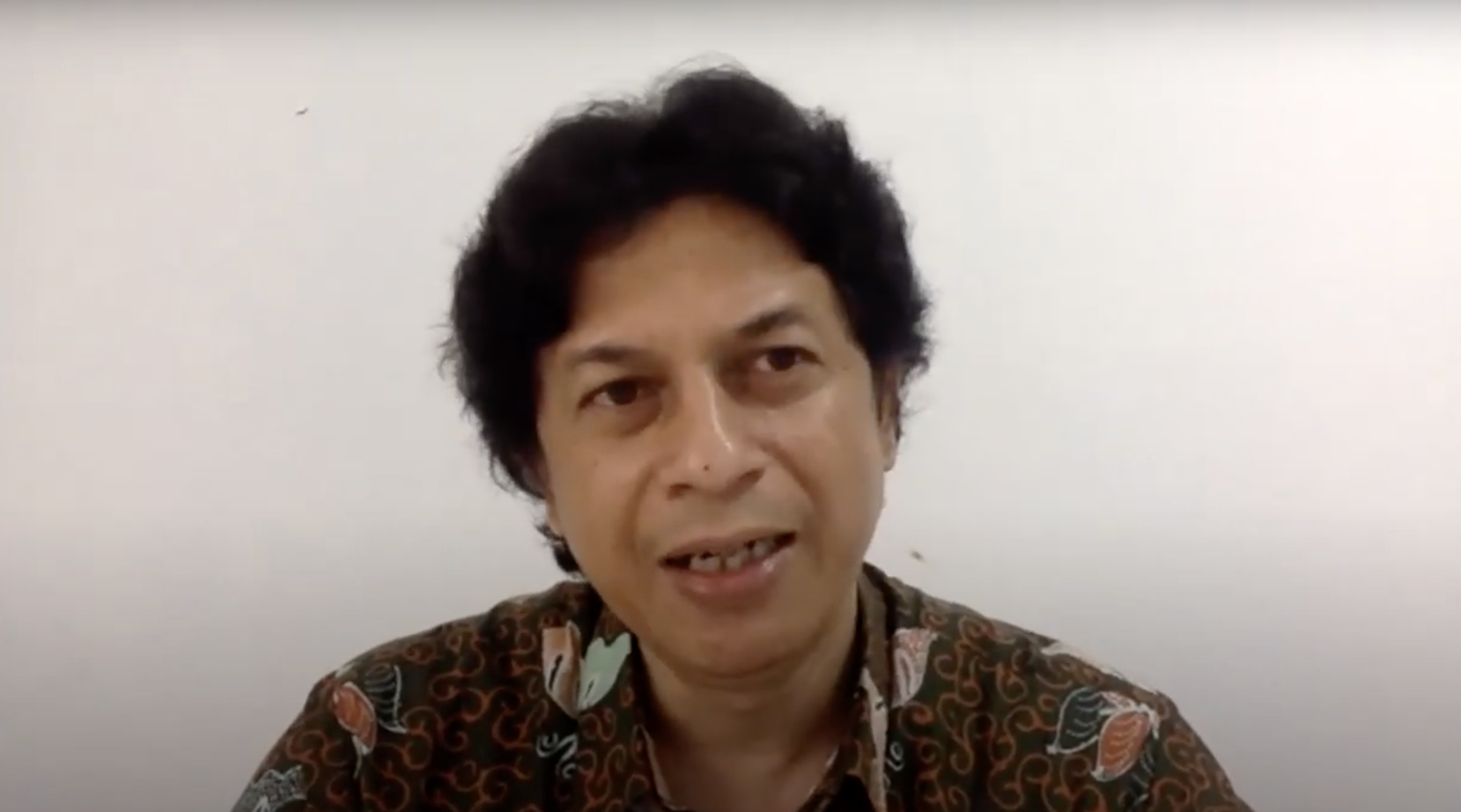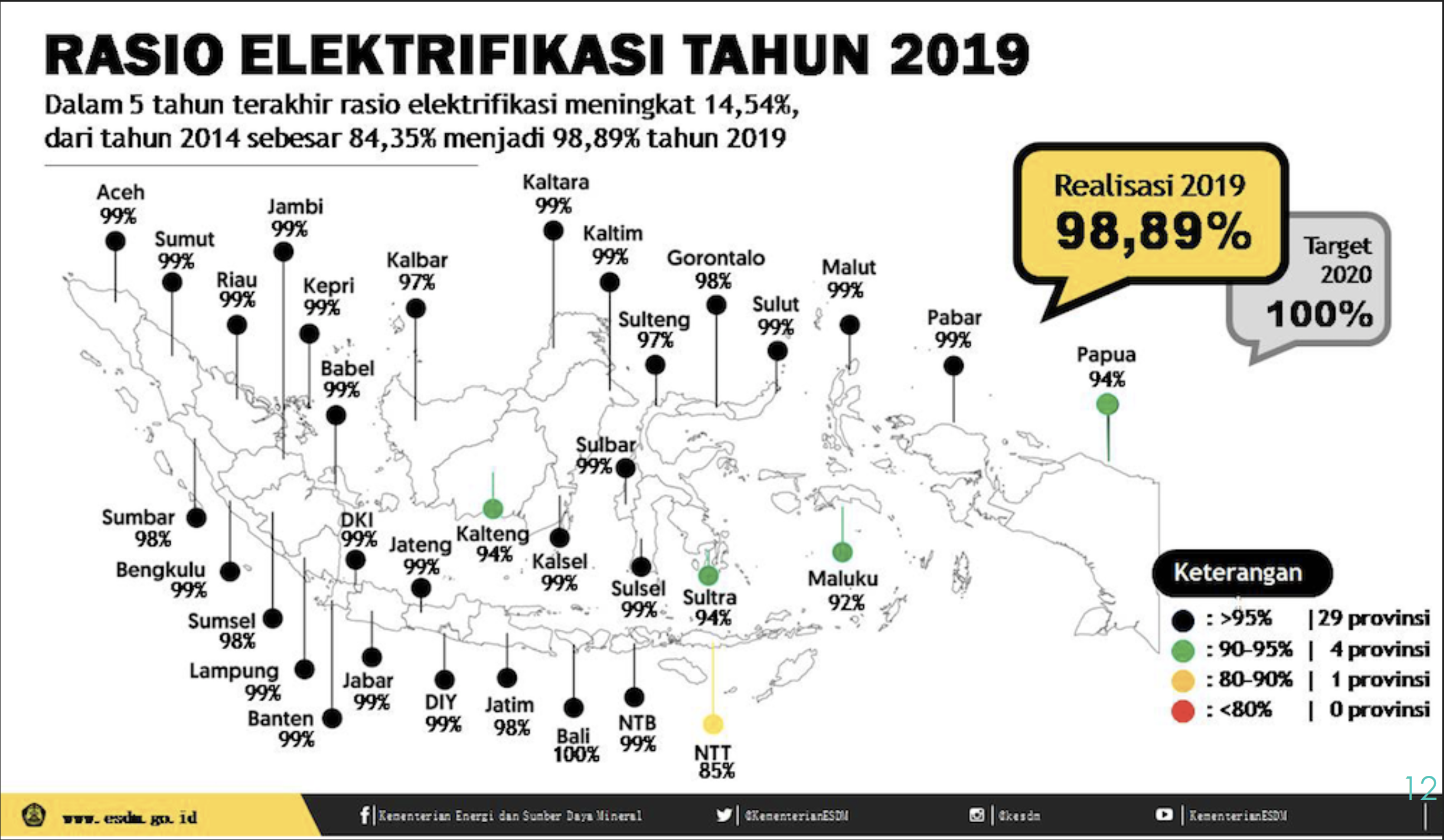Indonesia claims almost 99% electrification ratio, yet there is the case of energy poverty, i.e. lack of access to electricity in some rural areas, and lack of access to clean energy. Maxensius Sambodo (Centre for Economic Research LIPI) examined the current state of energy access, the policies intervention, and the remaining challenges on FKP Webinar on Thursday, 16 April 2020.
In the past five years, Indonesia’s electrification ratio has risen by almost 15%. The government’s efforts include funding for micro-hydro and solar panel systems through the Special Allocation Fund (DAK) and the development of renewable energy facilities through the Village Fund (Dana Desa). The government also released the lampu tenaga surya hemat energi (LTSHE) program in 2017 which increased villages’ electrification ratio by providing solar home lighting for people without electricity access. However, energy poverty in rural areas, particularly in four provinces with a less than 100% electrification ratio (NTT, Maluku, Papua, and West Papua) still occurs with varying conditions between households. In rural areas, lack of access to electricity is due to poverty, energy-illiteracy, or remoteness. The use of clean energy is also an issue as 28% of villages in Indonesia still use firewood for cooking. Amongst villages without electricity, almost all villages (98%) use firewood for cooking.
With the existing issue in energy poverty, areas in Indonesia face a low level of development with low economic productivity. Energy subsidy should be aimed toward those who are energy poor, but the current subsidy is channeled through PLN rate and fossil fuel prices, meaning they are mostly aimed towards those who already have energy access. The government also needs to provide more means to promote renewable energy.
During the discussion, there were some questions on the electrification ratio for Indonesia, raising the issue that the ratio may need to be reviewed as they are not apple-to-apple comparison between regions, and also that the ratio does not reflect the real coverage within the village (i.e. even if only one household has access to electricity, the village is counted as having access to electrification). Additionally, currently energy use for Indonesia is skewed toward household non-productive uses; an incentive structure may need to be developed to encourage more productive uses for energy.
For the complete presentation and Q&A session, please refer to the video and materials provided.





